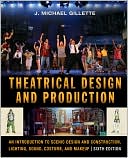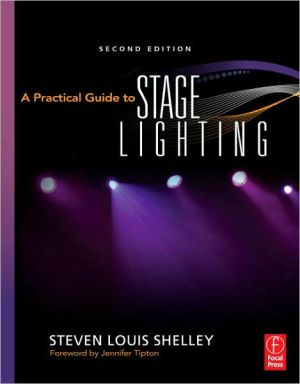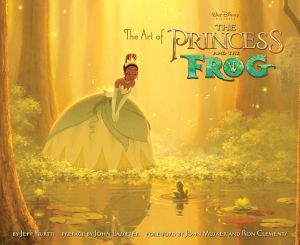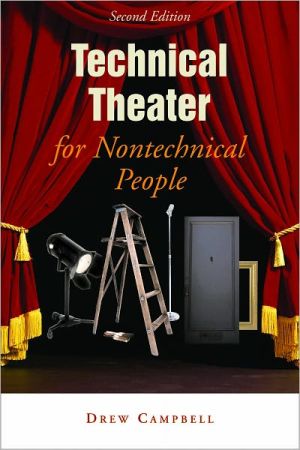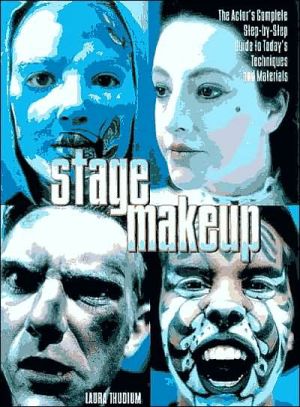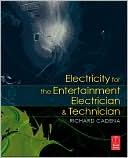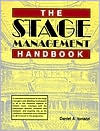The Automated Lighting Programmer's Handbook
Search in google:
From basic principles of automated lighting, to pre-production preparations, the text details concepts, procedures, and guidelines to ensure a successful production. Then the author continues with in-depth explanations for beginning, intermediate, and advanced programmers. Additional sections explore troubleshooting principles, working relationships, and future technologies. For the final chapter of the book, the author interviewed many respected lighting industry veterans including John Broderick, Christian Choi, Laura Frank, Jim Lenahan, and Arnold Serame.* Linear aspect of building a show from beginning to end * Includes author's Sydney 2000 Olympic Journal * Advice from respected industry pros including Christian Choi, Laura Frank, and John Broderick
List of Tables and FiguresAcknowledgmentsIntroduction10 Things Every Programmer Should Know#1 Understanding the Fixtures#2 Basic Console Operations#3 Patching and Addressing#4 Making Lights Move#5 Long Hours and Late Nights#6 Subtractive versus Additive Color Mixing#7 Tracking#8 Protect the Data#9 How to Admit Your Faults#10 Who to CallBut Wait! There's More...1 Programming Philosophies 1The Automated Lighting Programmer 1The Hollywood Syndrome 2Creativity and Consistency 3Learning to Program 3Look for Opportunities 4Programming Exercises 4Explore Your World 5Never Stop Learning 5Be an Artist 52 Automated Lighting Concepts 7DMX-512 7DMX Protocols 8Fixture Modes 9Crossfade 10Bump 10Parameter Abilities 10Precedence (HTP and LTP) 11Tracking 11Nontracking Consoles 11Tracking Consoles 12Advantages of Tracking 13Disadvantages of Tracking 14Practice Makes Perfect 143 Preparing for Programming 15Fixture Setup 15The Console 16Preparing the Patch 19Numbers Everywhere 21Groups 22Grouping Basics 23Too Many Numbers 23Selecting with Groups 24Additional Group Features 24Read All About it 25Building a Basic Outline 25Protecting Your Work 25Always Be Prepared 294 Basic Programming 31Understanding Your Fixtures 31Speed Channels 33Conventional Channels 35Palettes/Presets 375 Intermediate Programming 41Mark Cues 41Tricks of the Trade 42Automated Mark Cues 43The Magic of Marking 44Block Cues 44Marking and Blocking 45Organization 46Overblocking 46Effects Generators 46The DMX Protocol 47Trigonometry to the Rescue 47Modifying the Starting Point 47Modifying the Size and Rate 48Offsetting Each Fixture 49Different Wave Forms 49Other Parameters 50Intensity Effects 51Adding Dynamics 51Adjusting Intensity Effects 52Use Effects Wisely 53Kickin' It Old School 53The Fireworks Chase 54Making the Magic 55Timing 55Modern Miracles 56Applying Concepts 56Common Chases 56Fanning 58The Origins of Fanning 58Basic Fanning Procedures 58The Order of Fixture Selection 59But Wait! There's More... 60Now is the Time 60Stay Cool as You Fan 616 Advanced Programming 63Default Values 63Using Default Values 64Custom Default Values 65Study the Defaults 65Deciding upon Defaults 66Visualization 66How It Works 66Benefits 67Programming 67Cueing 68Two-Way Communication 68Program Anywhere 68It's Time for Timecode 69The History of Timecode 69Defining Timecode 70Timecode and Lighting 70Changing Time 71Hidden Dangers 71Back to the Future 72The Magic of MIDI 72Lighting Applications 72MIDI Notes 73MIDI Show Control 74Be Prepared 76Other-Types of Automation 76Automation Abounds 777 Digital Lighting: The Future Is Here 79Content 80New Jobs 81Point of View 82Servers and Display Devices 82New Functionality and Terminology 83Programming Digital Lighting 84Enough Is Enough 85Working with Layers 86The Console Problem 86Fixture Numbering 87Patching the Parts 87The Missing Link 87The Future Is Now 888 LED Lighting 89LED RGB Mixers 89LED RGB Cells 90LED Moving Lights 91LED Digital Lights 91LED Video Displays 92Pixel Mapping 92Making It Easy 939 The Age of Networking 95Network Setup 95Networking Basics 95Multi-User Programming 96Network Backup and Failover 97Distributed Processing 97DMX Distribution 97Connectivity 98Remote Access 98RDM and What It Means to You 99E1.31: The New Frontier 99Ease of Use 10010 Programming Genres 101Structured and Corporate Theatre 101Organization 102Conventionals 103Dual Consoles 103Prepared Theatrics 104Concert Tours 104It Is All About the Music 105Before You Program 105Cue Building 106Standard Operating Procedure 107Every Concert Is Different 107Television Events 107The Cameras Are You Eyes 108Adjusting for the Camera 109Colors and Their Temperature 110The Magic of Television 110The Magic Box 110Music Festivals and One-Offs 111Organize Your Data 111Programming 112One Approach 112Visiting LDs 113Fun for All 113Architectural Installations 113Where Is FOH? 114Look at the Time 114User Interactions 115Maintenance 115Permanent Joys 11611 Troubleshooting 117Common Problems 117Data Problems 117Console Problems 118Network Problems 119Fixture Problems 119Operator Error 119Getting Help 120Emergency Preparedness 120Be Prepared 120Safety of Others 121Personal Safety 121The Actor's Point of View 122Safety First 12212 Programmer and Designer Relationships 123People Are People 123Types of LDs 124Troubled Waters 124Changing Tides 125Life Is Like a Box of Chocolates 12513 Words of Wisdom from Industry Professionals 127Butch Allen, Designer and Programmer 128Jason Badger, Programmer 128Mike Baldassari, Designer 128Automated Lighting Inventor and Visionary Richard Belliveau Belliveau, Richard 129Allen Branton, Designer 129John Broderick, Designer 129Dall Brown, Designer 130Mark Butts, Programmer 130David Chance, Designer 130Christian Choi, Programmer 131Vickie Claiborne, Programmer 131David Davidian, Designer 131Patrick Dierson, Designer and Programmer 132C. Andrew Dunning, Designer and Programmer 132Mike Falconer, Programmer 132John Featherstone, Designer 133Cory Fitzgerald, Programmer 133Laura Frank, Programmer 133Demfis Fyssicopulos, Programmer 134Craig Gaff, Designer and Programmer 134Steve Garner, Programmer 134Jon Griffin, Designer and Programmer 134Tim Grivas, Programmer 135Rob Halliday, Programmer 135Bryan Hartley, Designer and Programmer 135Bud Horowitz, Designer and Programmer 136Steve Irwin, Designer and Programmer 136Seth Jackson, Designer and Programmer 136Mark "Junior" Jacobson, Designer and Programmer 137Shannon January, Designer and Programmer 137David "Gurn" Kaniski, Designer and Programmer 137Mats Karlson, Programmer 138Eric Kennedy, Programmer 138Tom Kenny, Designer 138Hillary Knox, Programmer 138Marcus Kromer, Programmer 139Jim Lenahan, Designer 139Steve Lieberman, Designer and Programmer 140Esteban Lima, Designer 140Heath Marrinan, Designer and Programmer 140Michael Nevitt, Programmer 141Adrian Ngieng, Programmer 141Paul Normandale, Designer 141Jim Ohrberg, Designer and Programmer 141Steve Owens, Designer 142Mitch Peebles, Programmer 142Paul Pelletier, Programmer 142John Rayment, Designer 142Benoit Richard, Designer and Programmer 143Scott Riley, Designer and Programmer 143Larry "Uncle Fester" Robbins, Designer and Programmer 144Timothy F. Rogers, Programmer 144Susan Rose, Programmer 144Arnold Serame, Designer and Programmer 145Marsha Stern, Designer 145Henry M. Sume, Designer and Programmer 145Howard Ungerleider, Designer 146Lawrence Upton, Designer 146Jon "Hillbilly" Weir, Designer and Programmer 146Ross Williams, Designer and Programmer 147Appendix A Sydney 2000 Olympic Games Journal 149Appendix B Metallica Touring Journal 169Appendix C The Crystal Method Tour: A Case Study 187Glossary 205Index 209


